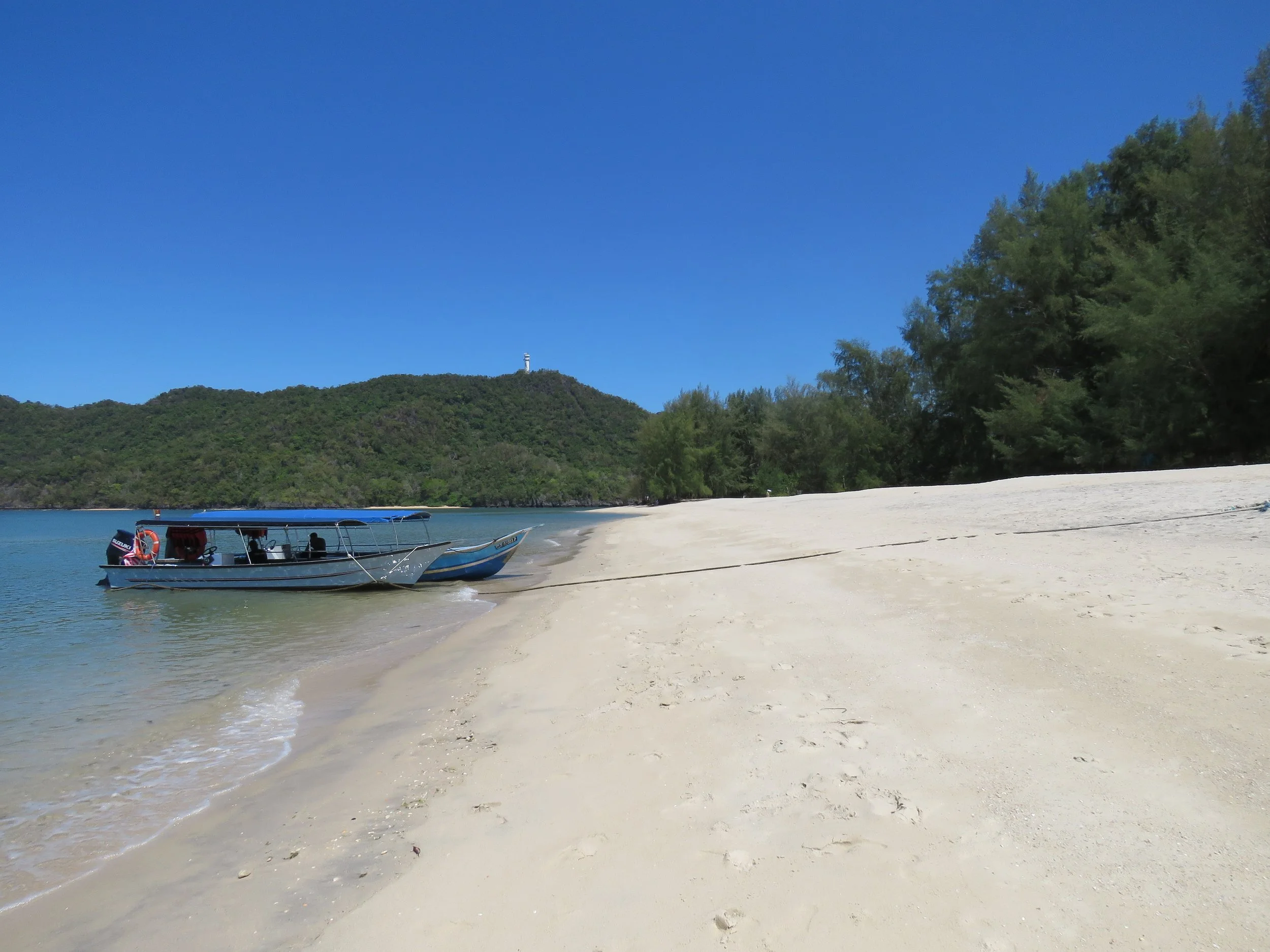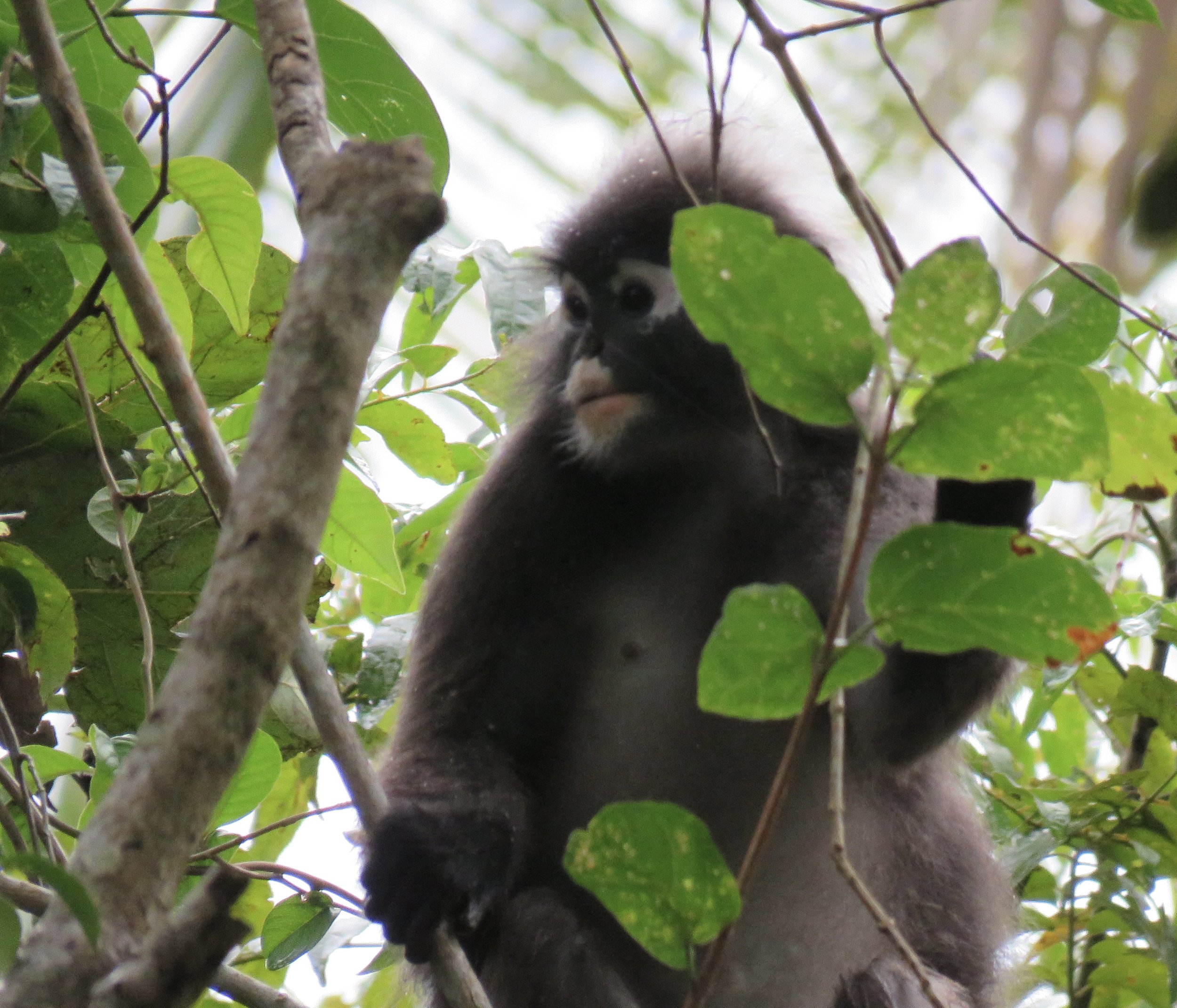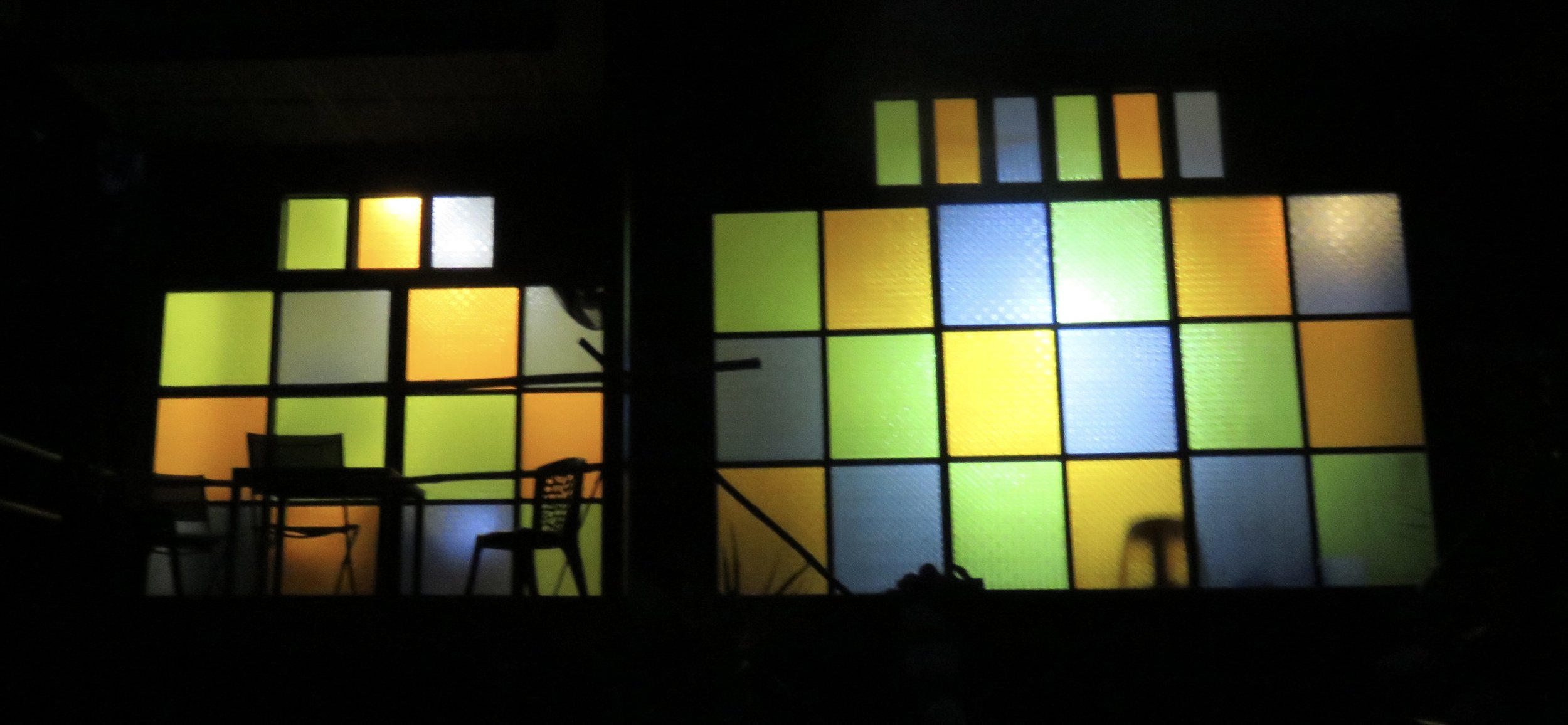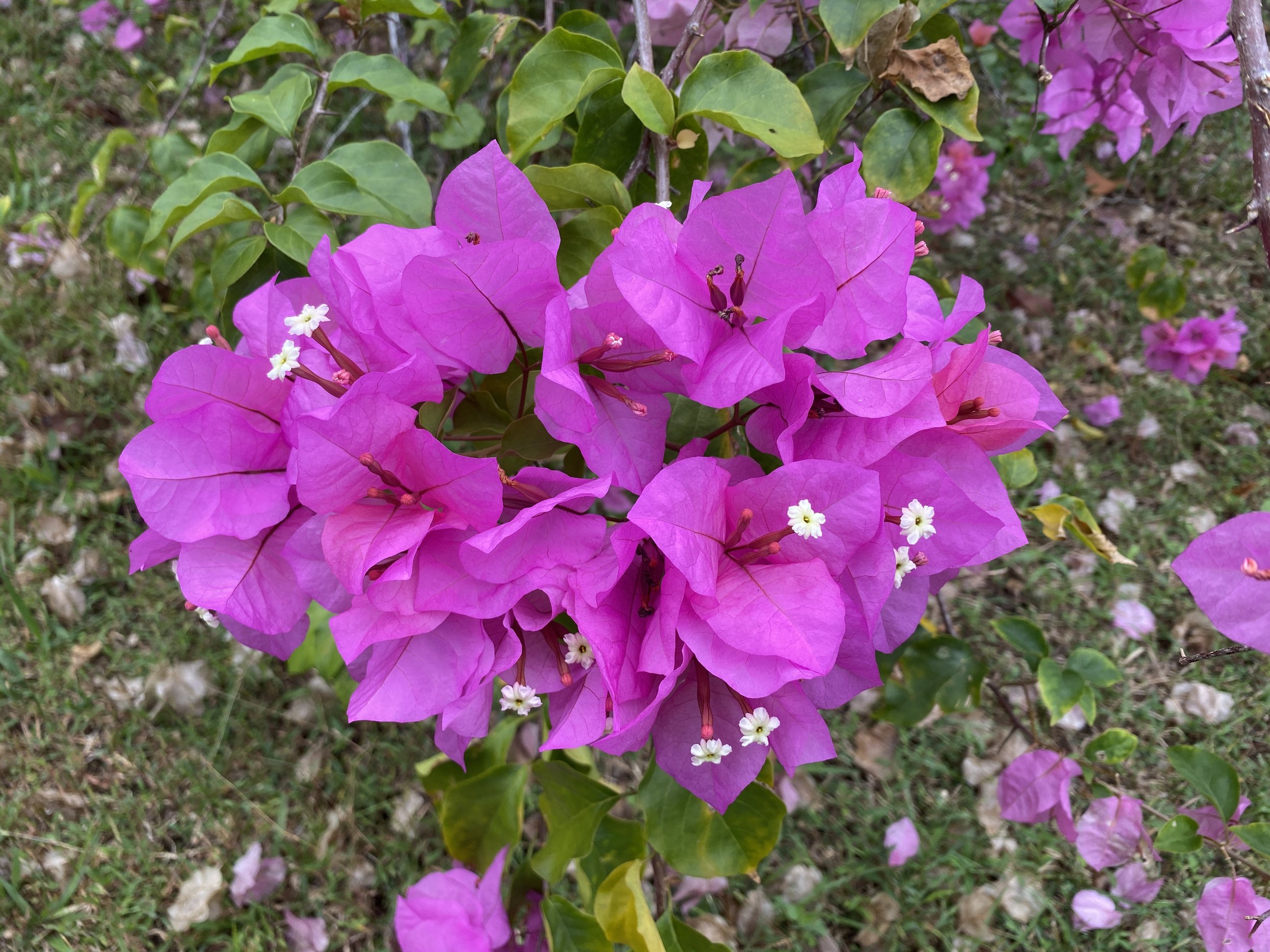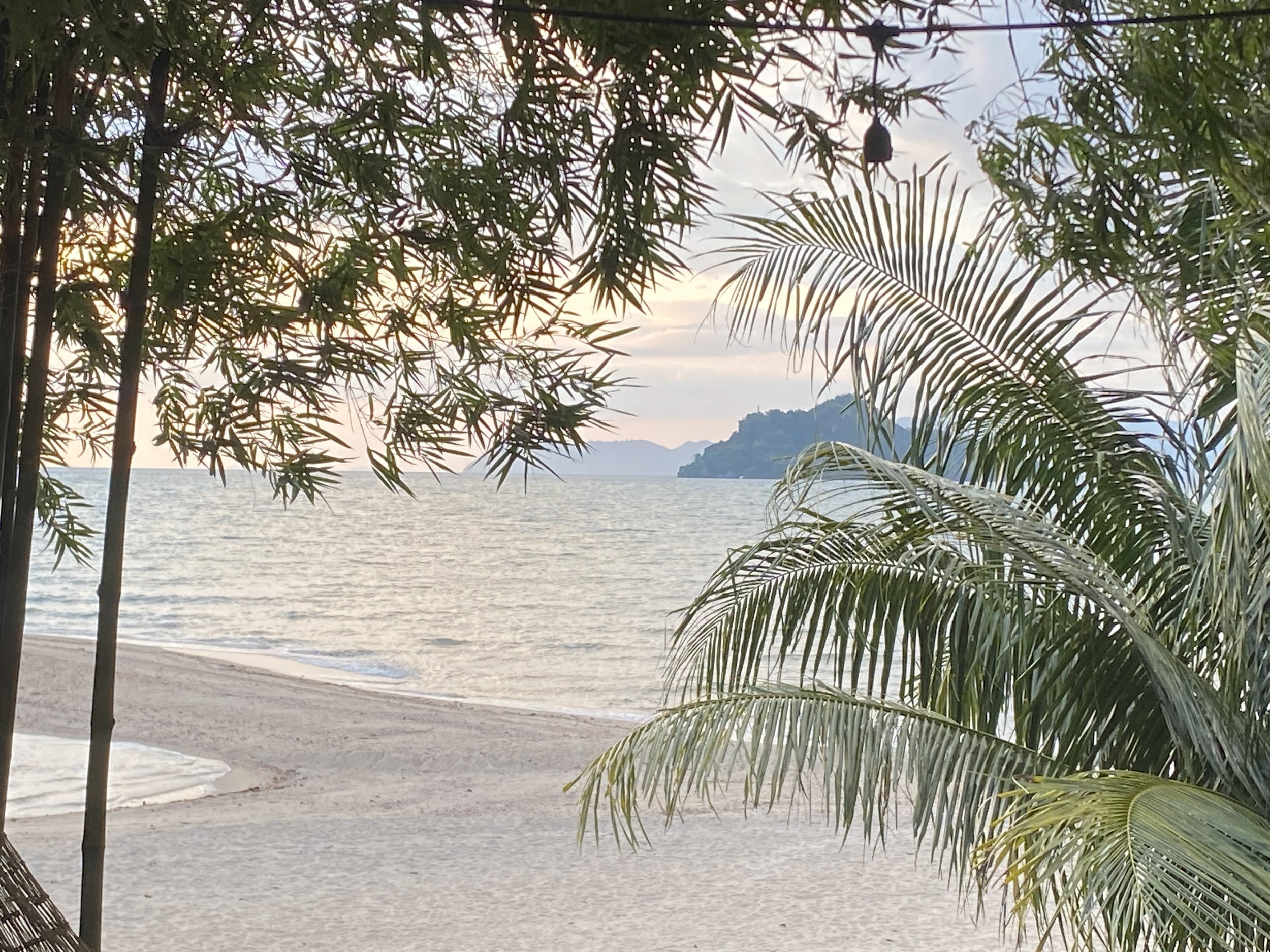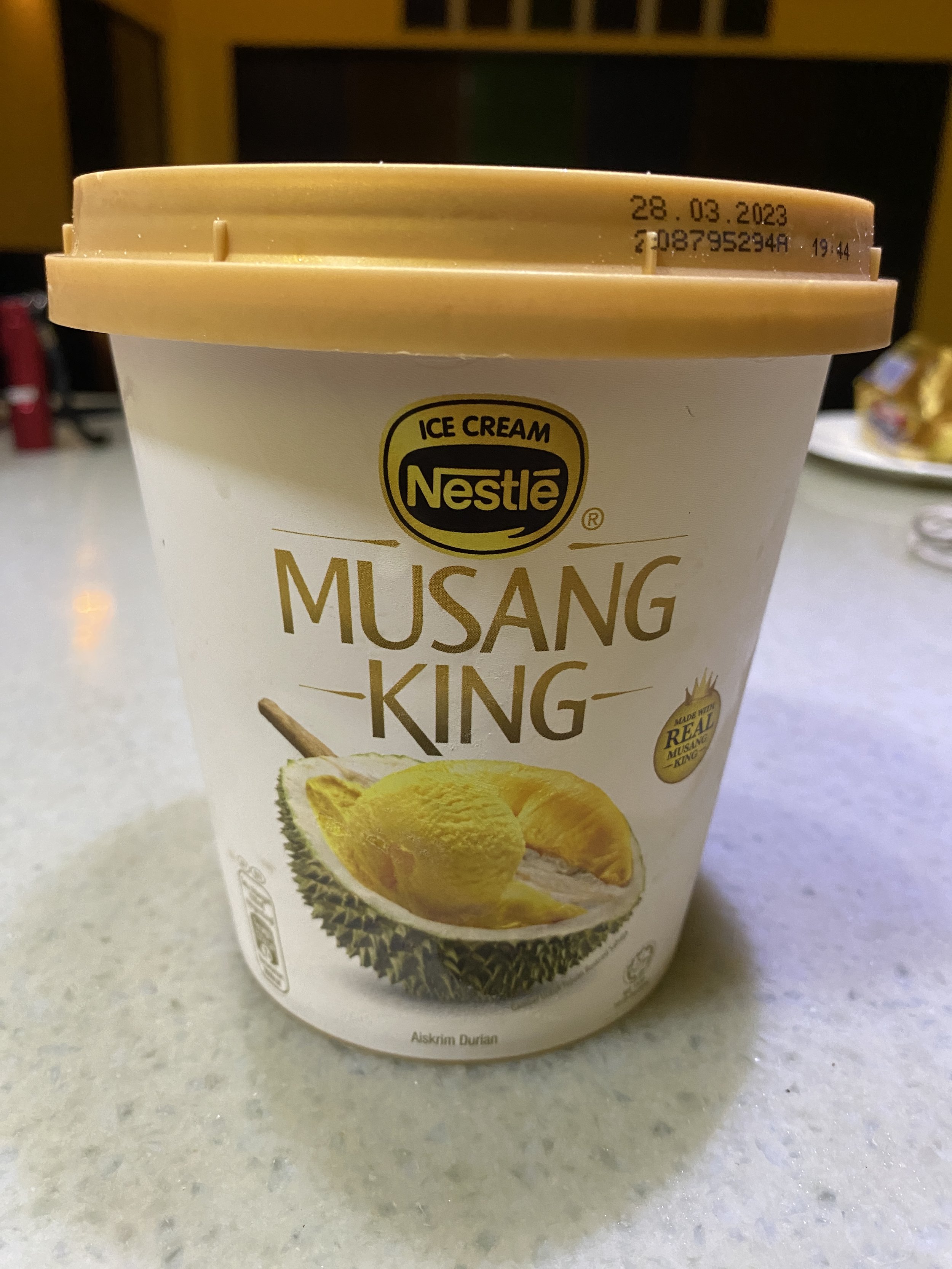The house we found on AirBnB.
We don’t do winters anymore.
Yes, winter can be cozy by the fireplace, with fleecy pj’s, furlined moccasins and a good book. But in winter it’s cold outside, it rains and rains so we don’t want to walk. We can’t do much if any gardening. And, having lived in the Yukon and the Rockies, we’ve shoveled enough snow, thank you.
The view on the Andaman Sea. with islands in Thailand on the right.
Our neighbor on the left: Dusty Leaf monkey.
Last year we searched for a warm place we could reach by driving and ended up in Palm Spring, California.
The neighbor on the right: a hornbill.
This year we were willing to fly again to reach a warmer destination. We spent many hours searching online for a place to spend 2 months or more. Where is it warm, safe, easy to travel, not too expensive? After considering several places in Central America (Mexico is out for us because of its high crime rate), California (prices soared now that people are traveling again) and Asia, we selected Malaysia.
Malaysia is a constitutional monarchy. It’s capital city is Kuala Lumpur. We had been to Malaysia before and liked the atmosphere, the cleanliness, the safety and the fact that many people speak English. When I was at International Schools in KL, teachers told me that they holiday on the Malay island of Langkawi, in north western Malaysia. We read up on Langkawi, searched AirBnB and found what seemed to be a perfect little house on the beach. We booked flights from Vancouver, via Hong Kong to Kuala Lumpur, then a local flight to Langkawi.
It was a long trip! The Cathay Pacific planes were not bad, the food decent, our leg room okay but still I wondered if Malaysia would be worth such a long trip (I always lose track of hours when you cross time zones, even the dateline) but I think it was about 40 hours total. This included a 5 hour wait in Hong Kong airport, which is spotless and comfortable but at 5 AM everything was closed and due to Covid almost all coffeeshops were closed.
In Kuala Lumpur we did not have a similar long time between flights and the line ups for immigration scared us: it would have taken hours. Luckily we soon discovered a much shorter line up for domestic connections so we moved there and made our flight with no problem. Malaysia issues a free visitors visa for up to 90 days and we were not asked any questions on length of stay, vaccines or anything else.
Eventually we found Malaysia Airlines for our flight to the island of Langkawi, just a one hour hop that landed us in tropical paradise. Langkawi is famous for its spectacular sunsets and we watched the first one from the plane as the skies turned purple with flaming reds and orange. The outside air hit us, for the first time, like a wall. After freezing in HK airport and on the planes, it was now 30º C at 9 PM.
A half hour taxi ride from the airport took us to our little cottage where the (Canadian!) owners were waiting for us. It was dark so it was hard to get a perspective but our little house seemed primitive at first glance. We just crashed on the big bed inside a mosquito net and slept the night away. It wasn’t until the next morning that we discovered how wonderful it is here. The little house is based on a traditional Malay design: a small house on stilts, with two entire walls of traditional Malay glass panels in yellow, green and blues. These walls slide open so that the entire house is open. A wide overhang shelters the veranda so we can sit out of the sun or rain. One bathroom has 3/4 walls so that you look into the trees and hear the birds while having a shower. The water is not heated but you can simply turn a dial to get warm water. When I heard that I thought it was strange. But in reality I have not yet turned up the warm water because all you want is a cold shower here! Apparently it is also typical Malay that there is no warm water at the kitchen sink. We have to boil water if we want to wash dishes with warm water.
The bedroom is attached but outside of the rest of the house, with a large four poster bed with mosquito nets. You can hear the thrill call of geckos all night as they hunt for little insects inside the house.
There’s a small kitchen corner but no stove. There IS a toaster, a small oven, one burner we can put on the counter, a kettle and a coffee maker. Enough to keep us happy and not enough to cook big meals so that makes me even happier - especially once we discovered that eating out here is cheaper than doing groceries… On our first day we found a little roadside restaurant with a hot buffet of rice, coconut chicken, beef and a glass of lemonade. The total cost was about 4 dollars total for both of us.
Malaysia is only a few degrees north of the Equator so it’s warm. I wouldn’t want to be here in summer. In January and February is it between 30 and 32º C (about 92ºF) every day. The humidity is high and there’s a chance of a refreshing rain shower but most clouds blow over. A rain shower in this season will last from a minute to ten minutes but rarely longer.
Our little cottage overlooks a green lawn, framed by flowering azaleas, hibiscus and frangipani, tall palm trees and ficus where butterflies dart from flower to flower. The view is solely of the Andaman Sea - no other houses. (I know, it’s awful. You really don’t want to come here! Nothing to do…, she says tongue in cheek.)
At low tide there’s more sand beach and rocks in the sea. At high tide we can swim. The water of the Andaman Sea is warm - 30ºC or 90ºF, so it’s lovely but not refreshing. ‘Our’ house is surrounded by jungle sounds: hornbills and Asian couls squack at dusk. Cicadas screech like squeaky fan belts day and night. The weirdest bird (took us a while to figure out) is a long-tailed nightjar. I had never heard of it… It’s a brownish bird that nests in leafs on the ground. But its call is amazing: a loud vibrating clonk as if you hit a brick with a hammer. Very rhythmic. It calls 1-2-3, 1-2, 1-2, 1-2-3 hammer hits until it wakes us up. Then it moves on to another house… It seems more reliable than an alarm clock. Click here to hear it: https://youtu.be/9K21YVzOBRY
The daily cleaning crew.
Kees has taken to waking up at dawn when this bird calls (around 7 - 7:30 each morning) so he can walk when it is still relatively cool. He walks the white sand beach, lined with palms and a sprinkling of little guest houses. There are virtually no other people on the beach except for a cleaning crew of 4 or 5 men and women in yellow traffic vests. They each have a bamboo rake and spend the entire day raking leafs and any stray garbage, putting it in bags and leaving a lovely clean beach - a far cry from other Asian beaches we have seen. There are some plastic bottles or bags along the high water mark or along roads, but by and large it’s quite clean here. Except around the public garbage containers. These are parked here and there along the roads - big open containers. You simply chuck your bag into it but then the problem is monkeys… They pull things out and make a mess!
We rented a little Suzuki, perfect for groceries and exploring. We found two small local supermarkets and stocked up on basics. Shopping in a foreign country, in a different language is always a fun challenge. Labels here are mostly in Malay only. We had a hard time finding decaf coffee, and what I thought was ground coffee turned out to be instant. … I bought what I thought was coffee cream but turned out to be a coffee flavoured milk drink.
One of the most unusual fruits is the durian. This is durian icecream…
Our favourite shopping here is at the Night Market. There is one every night of the week in a different location. The one in “our village” is on Fridays. The market has long rows of stalls - mostly with amazing local foods. Much of it we have no idea what it is. What I did recognize was packages of steamed rice in banana leafs, satay, lots of rice, fried chicken, shaved beef. There’s no pork in a Muslim country!
There are stalls with huge jars of different flavoured fruit drinks. One stall sold nothing but sushi that looked like little pastries with layers and stripes and decorations. We took home salads with prawns and crab meats. And tried a little pancake with ground peanuts. On another night we bought nasi goreng (fried rice), satay, samosas and murtabak, a package of chicken ragout fried in egg.
For breakfast we usually have fresh mango, watermelon, jackfruit, bananas and other fresh local fruits.
In a next Malaysia blog, we’ll take you for a tour of the island!
RESOURCES:
• https://www.langkawi-insight.com/langkawi_000001.htm
• https://www.wonderfulmalaysia.com/langkawi-island-malaysia.htm
